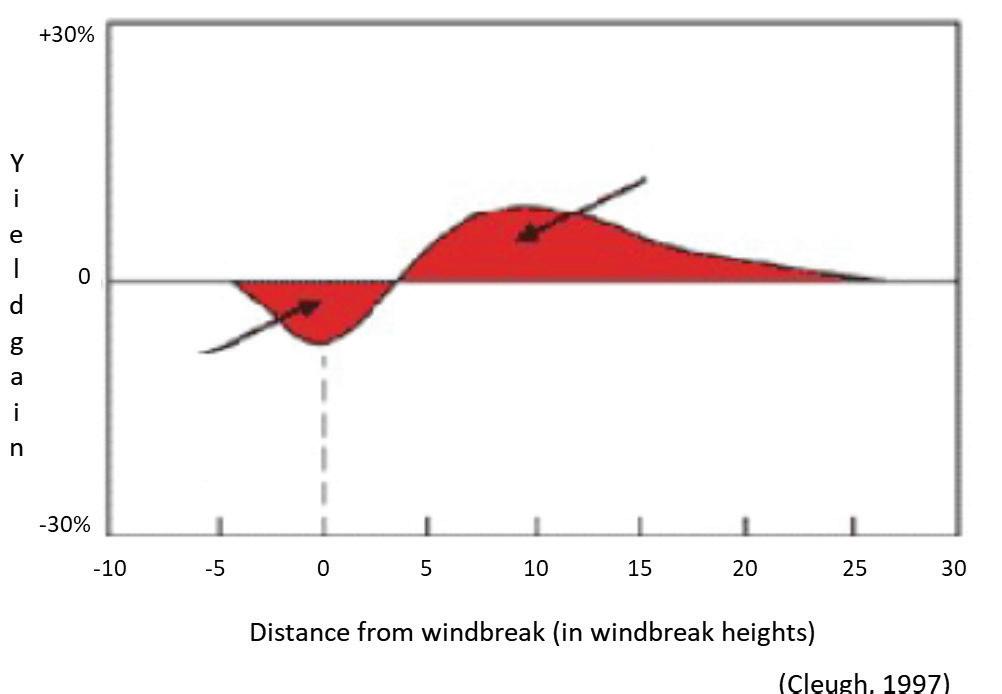
4 minute read
Natural land: Lost opportunity, or valuable resource?
Are those old fencerows, tree bluff s, wetlands, and shelterbelts an opportunity to farm more acres? Before you clear and remove them, stop and consider their value to crop production.
Th e desire to remove these areas is well understood: many times, they’re in the way. Especially isolated tree bluff s and wetlands. As equipment gets larger and wider, it becomes more and more diffi cult, and less effi cient to farm around these areas. As well, old shelterbelts and fencerows prevent consolidation of neighbouring properties when they’re acquired, and are diffi cult to manage as they mature. And lastly, as farmland becomes more and more valuable, it is oft en more economical to farm more of the land a producer already owns simply by removing trees or water and farming through it.
In spite of the fact that there is an area of reduced yield immediately adjacent to shelterbelts, ditches and tree bluff s, there are data going back at least 50 years demonstrating the net positive eff ect on yield they have. Indeed, this relationship is well documented across Canada as a means of increasing net yield, by managing wind and water.
Recent research, however, has begun to show that this yield relationship exists for not just shelterbelts but all of the natural and uncultivated spaced listed above – fencerows, ditches, tree bluff s, and wetlands. Work in northern Alberta showed that the presence of these uncultivated spaced within 750 meters of crop had a strong positive effect on Canola yield… in fact, more than enough to compensate for the opportunity cost of growing trees and shrubs rather than crops.
This is part of a larger global body of literature which shows the same effect. Currently in Western Canada, several producer and government-funded project are underway to put a dollar value on these uncultivated areas. Once again, the preliminary analysis shows this same yield relationship to all crops in rotation. Rather than viewing these areas as unproductive, we hope that producers and landowners will recognize the value that these spaces provide to their own bottom line – generating more profit, from fewer acres, and requiring fewer applications of costly pesticides. And perhaps most interesting, is that we also see canola oil content increase in the 15-200 meter range from these spaces. There did not seem to be any effect on weed abundance or diversity, indicating that these spaces are not offering sanctuary to weedy plants.



These projects, one being conducted by the University of Calgary, the other by Agriculture and Agri-Food Canada in Indian Head SK, have also begun to evaluate quality parameters as well. Soil health as measured by microbial biomass in substantially increased near these natural or uncultivated spaces. There is also a dramatically increased abundance and diversity of hundreds of species of beneficial insect and natural enemies of crop pests.
The presence of these insects results in increased pollination efficiency of crops like canola by native pollinators, such as bumblebees and other solitary bees, hoverflies, and many other nectar-feeding insects. We also see increased predation of pest species by predators like ground beetles, spiders, and lady beetles. This can be very effective; carabid beetles (a family of ground beetles)for example have a strong affinity for feeding on many pest species such as cutworms and diamondback moths, and larger species can consume several worms per day (see photo). Finally, parasitism of many of these same pest species by parasitic wasps that live in these areas can keep pest populations from exceeding threshold levels. This can be a particularly horrific manner of control, and I encourage you to see the damage they do to pest species for yourself (https://www.youtube.com/ watch?v=A6dVAy8aCsU).
Once again, this is not meant to remove productive cropland from production, but rather to re-assign poorer quality land into a crop yield enhancement. Here are a few suggestions of ways to make this happen:
• Preserving fencerows and road allowances in a weed-free state
• Maintaining or planting shelterbelts . Alberta Agriculture and Forestry maintains a valuable resource with the Agroforestry and Woodlot Extension Society https://www.awes-ab.ca/
• Identifying saline, poor quality, or otherwise non-profitable acres and planting them to a forage. Ducks Unlimited Canada offers substantial resources to aid in the cost of this planting https://www.ducks.ca/resources/ landowners/forage-program/
• “Squaring” off field edges, to eliminate implement overlap. Rather than having fields with an inefficient partial-pass, widen the field edge with weed-free grasses or forages to ensure an even number of field passes
• Planting grass into erodible water ways and water runs within a field
• Planting a “sanitation and loading zone” at the compacted field entrance. (This also can be a viable patch management strategy for clubroot management – a grassed area where equipment can be cleaned)


